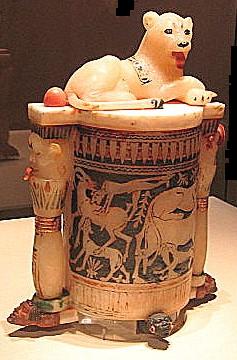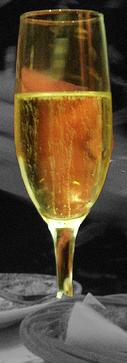|
Sarral, Tarragona
Sarral is a municipality and small town in the comarca of Conca de Barberà in the province of Tarragona in Catalonia, Spain. It includes the settlements of Sarral and Montbrió de la Marca. Montbrió was originally a separate municipality, but was incorporated into Sarral in 1972. The municipality has an area of 52 km, and a population (in 1995) of 1418. Its elevation is approximately 467m. Economic activity is mainly agricultural, principally vines and wine. Sarral produces its own variety of rosé cava (a sparkling wine). The other major traditional activity is quarrying alabaster and producing alabaster sculptures and craftware. Sarral also hosts Spain's biggest producer of frozen bread and pizzas. The town is ancient, with prehistoric urban remains having been found. It was granted a town charter in 1180. In the 14th century there was a large Jew Jews ( he, יְהוּדִים, , ) or Jewish people are an ethnoreligious group and nation originating from the ... [...More Info...] [...Related Items...] OR: [Wikipedia] [Google] [Baidu] |
Municipalities Of Catalonia
Catalonia is (as of 2018) divided into 947 Municipalities of Spain, municipalities. Each municipality typically represents one significant urban settlement, of any size from village to city, with its surrounding land. This is not always the case, though. Many municipalities have merged as a result of rural depopulation or simply for greater efficiency. Some large urban areas, for example Barcelona, consist of more than one municipality, each of which previously held a separate settlement. The Catalan government encourages mergers of very small municipalities; its "Report on the revision of Catalonia's territorial organisation model" (the ""), published in 2000 but not yet implemented, recommends many such mergers. Larger municipalities may sometimes grant the status of ''minor local entity, decentralised municipal entity'' ( ca, EMD, es, EATIM) to one or more of its settlements, for more effective provision of services or to substitute for its previous status as a separate mun ... [...More Info...] [...Related Items...] OR: [Wikipedia] [Google] [Baidu] |
Generalitat Of Catalonia
The Generalitat de Catalunya (; oc, label=Aranese, Generalitat de Catalonha; es, Generalidad de Cataluña), or the Government of Catalonia, is the institutional system by which Catalonia politically organizes its self-government. It is formed by the Parliament of Catalonia, the Presidency of the Generalitat de Catalunya, and the Executive Council of Catalonia (also very often referred to as ''Govern'', "Government"). Its origins are in the 13th century when permanent councils of deputies (deputations) were created to rule administration of the Courts of the different realms that formed the Crown of Aragon which gave birth to the Deputation of the General of the Principality of Catalonia (1359), the Deputation of the General of the Kingdom of Aragon (1362) and the Deputation of the General of the Kingdom of Valencia (1412). The modern Generalitat was established in 1931, as the institution of self-government of Catalonia within the Spanish Republic. Remaining in exile after ... [...More Info...] [...Related Items...] OR: [Wikipedia] [Google] [Baidu] |
Les Piles
Les Piles is a village in the province of Tarragona and autonomous community of Catalonia, Spain. References External links * Government data pages Municipalities in Conca de Barberà {{Tarragona-geo-stub ... [...More Info...] [...Related Items...] OR: [Wikipedia] [Google] [Baidu] |
Conesa, Tarragona
Conesa is a municipality and village in the comarca of Conca de Barberà in the province of Tarragona in Catalonia Catalonia (; ca, Catalunya ; Aranese Occitan: ''Catalonha'' ; es, Cataluña ) is an autonomous community of Spain, designated as a ''nationality'' by its Statute of Autonomy. Most of the territory (except the Val d'Aran) lies on the north ..., Spain. References External links Official websiteGovernment data pages Municipalities in Conca de Barberà {{Tarragona-geo-stub ... [...More Info...] [...Related Items...] OR: [Wikipedia] [Google] [Baidu] |
Rocafort De Queralt
Rocafort de Queralt is a municipality and village in the comarca of Conca de Barberà in the province of Tarragona in Catalonia, Spain. The municipality has an area of 8.6 km. Its elevation is approximately 562m. Economic activity is mainly agricultural, principally cereals, vines and wine, principally cava, a sparkling wine. In former times, Rocafort was an important centre for the production of saffron Saffron () is a spice derived from the flower of ''Crocus sativus'', commonly known as the "saffron crocus". The vivid crimson stigma and styles, called threads, are collected and dried for use mainly as a seasoning and colouring agent i .... The town's origins are obscure, but its castle is mentioned in an 1178 document. As of January 2012, the mayor of Sarral is Valentí Gual i Vilà. References External links Official websiteGovernment data pages Municipalities in Conca de Barberà {{Tarragona-geo-stub ... [...More Info...] [...Related Items...] OR: [Wikipedia] [Google] [Baidu] |
Kingdom Of Castile
The Kingdom of Castile (; es, Reino de Castilla, la, Regnum Castellae) was a large and powerful state on the Iberian Peninsula during the Middle Ages. Its name comes from the host of castles constructed in the region. It began in the 9th century as the County of Castile (''Condado de Castilla''), an eastern frontier lordship of the Kingdom of León. During the 10th century, its counts increased their autonomy, but it was not until 1065 that it was separated from León and became a kingdom in its own right. Between 1072 and 1157, it was again united with León, and after 1230, this union became permanent. Throughout this period, the Castilian kings made extensive conquests in southern Iberia at the expense of the Islamic principalities. The Kingdoms of Castile and of León, with their southern acquisitions, came to be known collectively as the Crown of Castile, a term that also came to encompass overseas expansion. History 9th to 11th centuries: the beginnings According to t ... [...More Info...] [...Related Items...] OR: [Wikipedia] [Google] [Baidu] |
Pizzas
Pizza (, ) is a dish of Italian origin consisting of a usually round, flat base of leavened wheat-based dough topped with tomatoes, cheese, and often various other ingredients (such as various types of sausage, anchovies, mushrooms, onions, olives, vegetables, meat, ham, etc.), which is then baked at a high temperature, traditionally in a wood-fired oven. A small pizza is sometimes called a pizzetta. A person who makes pizza is known as a pizzaiolo. In Italy, pizza served in a restaurant is presented unsliced, and is eaten with the use of a knife and fork. In casual settings, however, it is cut into wedges to be eaten while held in the hand. The term ''pizza'' was first recorded in the 10th century in a Latin manuscript from the Southern Italian town of Gaeta in Lazio, on the border with Campania. Modern pizza was invented in Naples, and the dish and its variants have since become popular in many countries. It has become one of the most popular foods in the world and a ... [...More Info...] [...Related Items...] OR: [Wikipedia] [Google] [Baidu] |
Bread
Bread is a staple food prepared from a dough of flour (usually wheat) and water, usually by baking. Throughout recorded history and around the world, it has been an important part of many cultures' diet. It is one of the oldest human-made foods, having been of significance since the dawn of agriculture, and plays an essential role in both religious rituals and secular culture. Bread may be leavened by naturally occurring microbes (e.g. sourdough), chemicals (e.g. baking soda), industrially produced yeast, or high-pressure aeration, which creates the gas bubbles that fluff up bread. In many countries, commercial bread often contains additives to improve flavor, texture, color, shelf life, nutrition, and ease of production. History Bread is one of the oldest prepared foods. Evidence from 30,000 years ago in Europe and Australia revealed starch residue on rocks used for pounding plants. It is possible that during this time, starch extract from the roots of plants, such a ... [...More Info...] [...Related Items...] OR: [Wikipedia] [Google] [Baidu] |
Sculpture
Sculpture is the branch of the visual arts that operates in three dimensions. Sculpture is the three-dimensional art work which is physically presented in the dimensions of height, width and depth. It is one of the plastic arts. Durable sculptural processes originally used carving (the removal of material) and modelling (the addition of material, as clay), in stone, metal, ceramic art, ceramics, wood and other materials but, since Modernism, there has been an almost complete freedom of materials and process. A wide variety of materials may be worked by removal such as carving, assembled by welding or modelling, or Molding (process), moulded or Casting, cast. Sculpture in stone survives far better than works of art in perishable materials, and often represents the majority of the surviving works (other than pottery) from ancient cultures, though conversely traditions of sculpture in wood may have vanished almost entirely. However, most ancient sculpture was brightly painted, ... [...More Info...] [...Related Items...] OR: [Wikipedia] [Google] [Baidu] |
Alabaster
Alabaster is a mineral or rock that is soft, often used for carving, and is processed for plaster powder. Archaeologists and the stone processing industry use the word differently from geologists. The former use it in a wider sense that includes varieties of two different minerals: the fine-grained massive type of gypsum and the fine-grained banded type of calcite.''More about alabaster and travertine'', brief guide explaining the different use of these words by geologists, archaeologists, and those in the stone trade. Oxford University Museum of Natural History, 2012/ref> Geologists define alabaster only as the gypsum type. Chemically, gypsum is a hydrous sulfate of calcium, while calcite is a carbonate of calcium. The two types of alabaster have similar properties. They are usually lightly colored, translucent, and soft stones. They have been used throughout history primarily for carving decorative artifacts."Grove": R. W. Sanderson and Francis Cheetham. "Alabaster", Grove ... [...More Info...] [...Related Items...] OR: [Wikipedia] [Google] [Baidu] |
Cava (Spanish Wine)
''Cava'' (, plural ''cavas'') is a sparkling wine of '' Denominación de Origen'' (DO) status from Spain. It may be white (''blanco'') or rosé (''rosado''). The Macabeo, Parellada and Xarel·lo are the most popular and traditional grape varieties for producing cava. Only wines produced in the traditional method may be labelled "cava"; those produced by other processes may only be called "sparkling wines" (''vinos espumosos''). About 95% of all cava is produced in the Penedès area in Catalonia, Spain, with the village of Sant Sadurní d'Anoia being home to many of the largest Catalan production houses. The two major producers are Codorníu and Freixenet. Cava is also produced in other villages in Aragon, Castile and León, Extremadura, La Rioja, Basque Country, Navarre and Valencia. Marketing Cava as "Spanish champagne" is no longer permitted under European Union law, since Champagne has a Protected Geographical Status (PGS). Colloquially it is still called ''cha ... [...More Info...] [...Related Items...] OR: [Wikipedia] [Google] [Baidu] |
Rosé
A rosé () is a type of wine that incorporates some of the color from the grape skins, but not enough to qualify it as a red wine. It may be the oldest known type of wine, as it is the most straightforward to make with the skin contact method. The pink color can range from a pale " onionskin" orange to a vivid near-purple, depending on the grape varieties used and winemaking techniques. Usually, the wine is labelled ''rosé'' in French, Portuguese, and English-speaking countries, rosado in Spanish, or rosato in Italian. There are three major ways to produce rosé wine: skin contact, ''saignée'', and blending. Rosé wines can be made still, semi-sparkling or sparkling and with a wide range of sweetness levels from highly dry Provençal rosé to sweet White Zinfandels and blushes. Rosé wines are made from a wide variety of grapes and can be found all around the globe.J. Robinson (ed) ''"The Oxford Companion to Wine"'' Third Edition pg 593 Oxford University Press 2006 O. ... [...More Info...] [...Related Items...] OR: [Wikipedia] [Google] [Baidu] |





